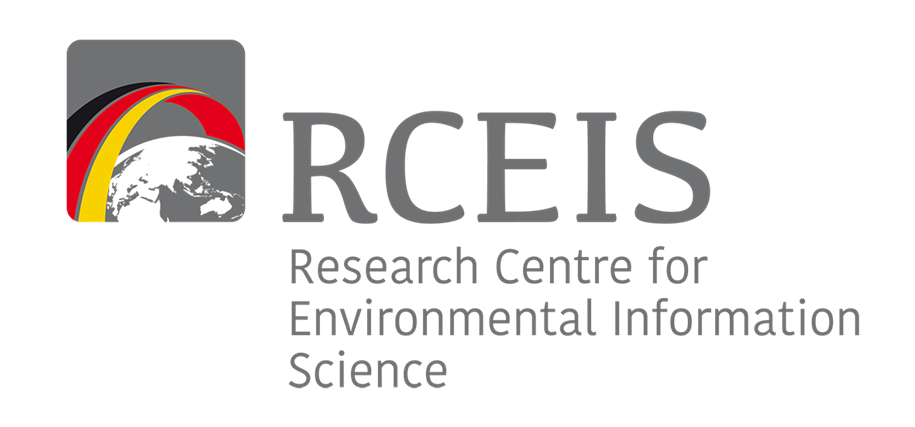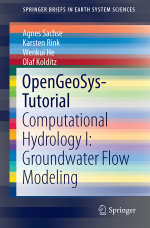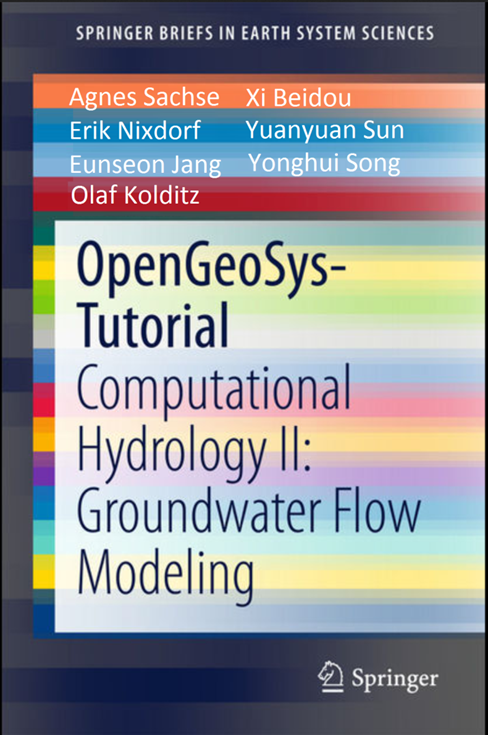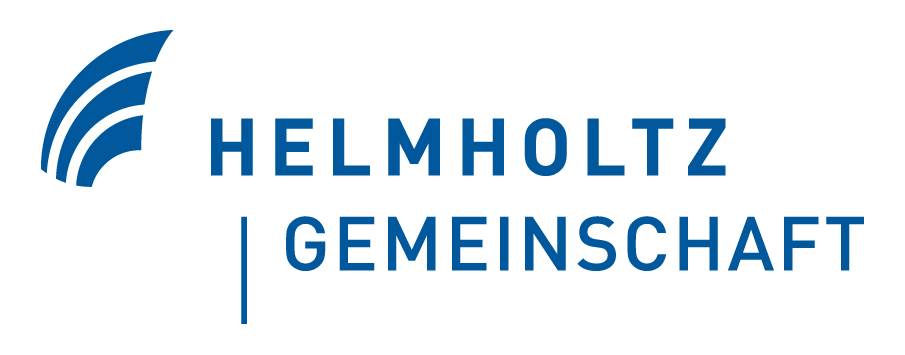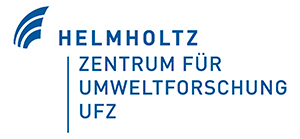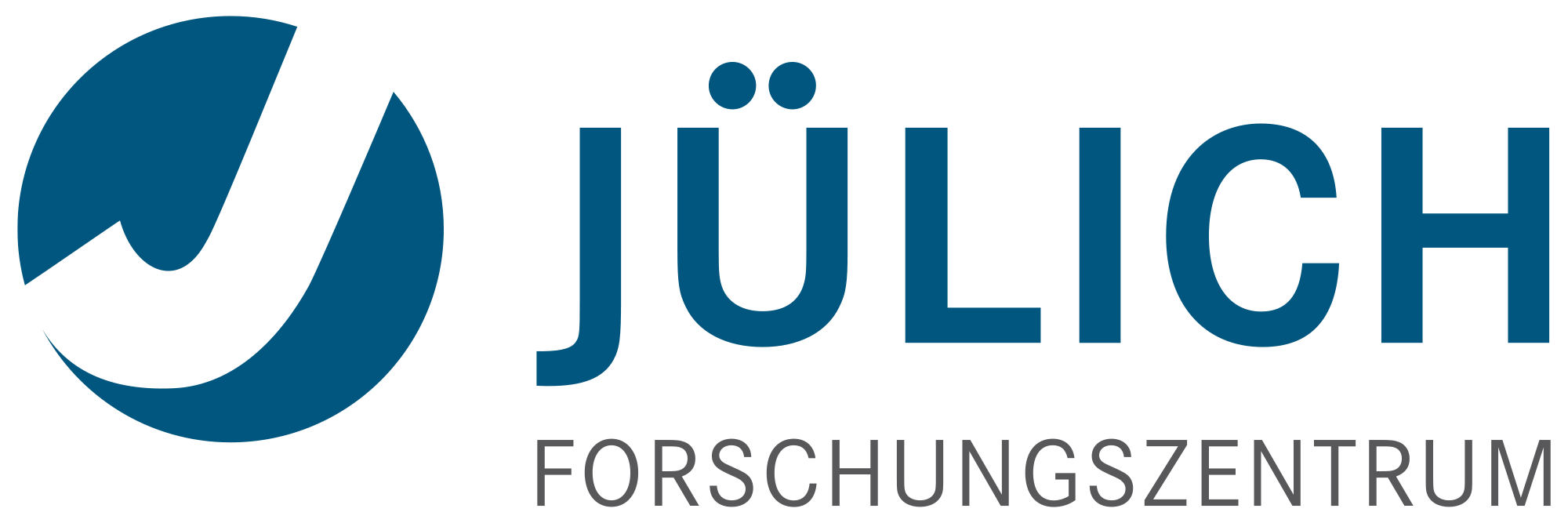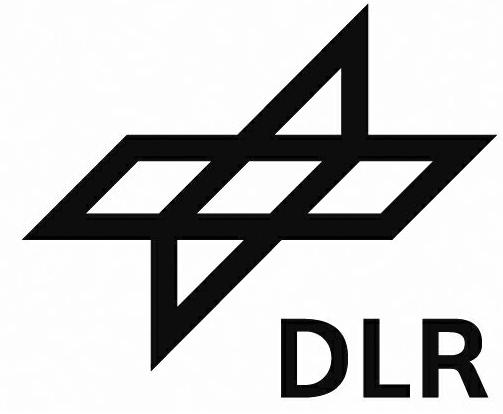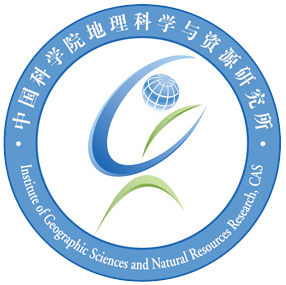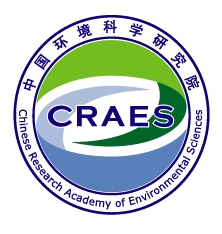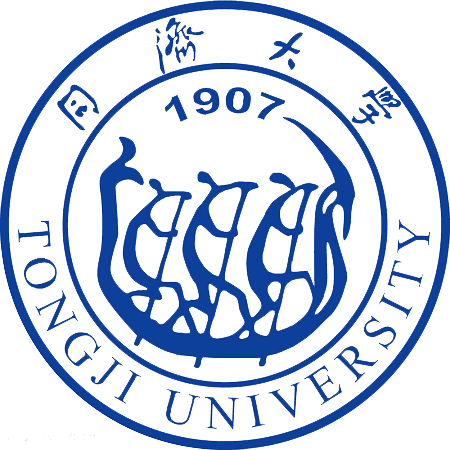09. Dec 2016, Shanghai-- The Sino- German Major Water Programme Conference
The Sino- German Major Water Programme Conference
The Sino-German Major Water Programme Conference took place in Shanghai on 9th December, 2016. The Conference was to ensure the implementation of technical cooperation projects and promote the greater achievements of the Sino-German cooperation.
As Chinese representatives, Dr. Chen Chuanghong, the Director General from Office of Major S&T Projects Most, and Mr Liu Zhiquan, the General Inspector and Deputy Director General from the Department of S&T and Standards, MEP gave opening talks. As German representative, MinDirig Wilfried Kraus, the BMBF Deputy Director General gave an opening speech. During the conference, Prof. MENG Wei, who is an Academician and the technical team leader of Major Water Projects, talked about the progress of Major Water Program and Suggestions for Sino-German Cooperation. Dr. Christian Alecke from BMBF Division Resources and Sustainability introduced BMBF CLIENT Programme. In addition to that, the topics about Major Water Program in 13th -5-year plan such as the german prospects for future cooperation in Beijing-Tianjin-Hebei region and Tai lake Basin and system design for eutrophication control of Taihu lake, were also discussed.
In the afternoon Session, proposal for Major water projects of 13th Five-Year Plan based on existing projects and similar experiences were discussed., Prof. Dai Xiaohu from Tongji University talked about the progress of the Sino-German Major Water Programme. Prof. Kolditz from UFZ, together with Prof. Liao Zhenliang from Tongji University, gave presentations about recommendations for Monitoring, modeling, early warning programs and information systems.Prof. Andreas Tiehm together from German Water Centre, together with Chinese partner, introduced the recommendations for drinking water safety, treatment and distribution.
This conference was organized by the Ministry of Science and Technology of PRC, Ministry of Environmental Protection, Ministry of Housing and Urban-Rural Development and the German Federal Ministry of Education and Research.
Visiting of the Delegation of the Helmholtz Association to the Tongji University
Visiting of the Delegation of the Helmholtz Association to the Tongji University
On 21. October.2016, the delegation of the Helmholtz Association visited the Tongji University, in Shanghai. The president from Tongji University Prof. Zhihua Zhang gave the welcome speech and introduced the University. In the first session about “Information and data science”, the president of Helmholtz association, Prof. Otmar D. Wiestler introduced the Helmholtz strategy on information & data science. The vice-president of Tongji University, Prof. Zhiqiang Wu gave a talk about the innovation strategy of the university. Several talks in the area of smart manufacturing and industry 4.0 were given by the Chinese colleagues from Tongji University. Afterwards, the potential cooperation between Helmholtz association and Tongji University were discussed. Prof. Olaf Kolditz from Helmholtz Centre for Environmental Research (UFZ) showed a video about the visualization of the environmental information system in Chao Lake, which is their current China-German cooperation project in China, funded by German ministry of Eduation and Research (BMBF). On the second session about “Clean water program”, Prof. Xiaohu Dai, the Dean of College of Environmental Science and Engineering from Tongji University presented the Sino-German cooperation in Water Science, Technology and Education. Mrs. Nicole Umlauf, head of BMBF-Project “Clean Water” Office Shanghai, gave the talk about the BMBF water projects in China. Prof. Olaf Kolditz and Prof. Zhenliang Liao from Tongji University gave a joint presentation about the BMBF CLIENT project “Managing Water Resources for Urban Catchments - Chaohu”, and the industry partner from this project, the general manager of HC System from Shanghai, Mr. Yuefeng Fan introduced the Sino-German Company Consortium: The need of Environmental Information Systems for Stakeholders Water 4.0. In the end, Prof. Wiestler and Prof. Zhiqiang Wu summarized the workshop. They emphasized the need to strengthen cooperation in the fields of water science, information technology and industry.
18 Oct 2016, Beijing-- Helmholtz Association – Chinese Academy of Sciences: “Strategic Partnership – Moving Ahead Together” Scientific Symposium
Prof. Wieslter visits CAS-president Bai Chunli
On 18.Oct.2016, the Helmholtz Association – Chinese Academy of Sciences: “Strategic Partnership – Moving Ahead Together” Scientific Symposium took place in the institute of high energy physics (IHEP) of the Chinese Academy of Sciences (CAS) in Beijing.
After the opening greetings from Prof. Otmar D.Wiestler, the president of Helmholtz association and Prof. Tieniu Tan, the vice-president of Chinese Academy of Sciences, both sides have given presentations about the past, ongoing projects and future strategies. The first part of the symposium is about the insight into the past and perspectives for the future. The vice-president of Helmholtz Association, Prof. Wolfgang Marquardt from Jülich Research Centre (FZJ) has presented their institute and its-cooperation with the institutes of CAS. Dr. Christian Haringa from German Electron Synchrotron (DESY) has talked about DESY’s cooperation with Chinese partners. Prof. Long Wei from the CAS institute of high energy physics talked about its cooperation with the Helmholtz association.
For the second part of the symposium about Helmholtz-CAS joint research groups (HCJRG), Prof. Thomas Stöhlker from Helmholtz Centre for Heavy Ion Research (GSI) presented the experiments with stored highly-charged ions and Prof. Yu Wang from CAS Institute presented the new technology about the space-borne microwave remote sensing for natural hazard prevention and analysis. The last part of the symposium is about the strategic approach toward the future. Bilateral cooperation in the field of health and life sciences, and brain sciences are given by Prof. Dirk Heinz from the Helmholtz Centre for Infection Research (HZI) and Prof. Simon eickhoff from FZJ, respectively, together with their Chinese partners. Prof. Olaf Kolditz from Helmholtz Centre for Environmental Research (UFZ) has presented the joint Sino-German Research Centre for Environmental Information Sciences (RCEIS) and its cooperation projects in China.
Prof. Wiestler summarized the results of the bilateral Strategic Symposium. In addition, he proposed that China and Germany should open bilateral research programs in the following fields, such as geo-and environmental sciences, brain research, health and life sciences, energy materials and energy storage technology so that the outstanding scientists can exchange ideas in order to achieve the win-win-based future-oriented strategic cooperation and the cooperation model should be guaranteed by joint research institutes.
Visit of NIGLAS in Nanjing--22.08.2016
Mr. Nixdorf visited NIGLAS in Nanjing. Foto: Chengzi Zhou
On 22.08.2016, Mr. Nixdorf from UFZ visited Nanjing Institute of Geography and Limnology, Chinese Academy of Sciences (NIGLAS). Dr. Jiang, Dr. Wu, Dr. Li and Mr. Nixdorf have all presented their recent research in the field of groundwater and lake water.
Dr. Li reported about the models and measure of groundwater and lake water. By measuring and analyzing, he found the Relationship between groundwater and wastewater in the wetland, and the chemical elements in the water in different seasons. The ideals about Interaction of river basins and groundwater, models of the wetland and models of the river basin were discussed.Dr. Wu presented her study about investigation flow processes in a conduit-sediment system using a laboratory model resembling a siphon and numerical modeling. Her study confirms that conduit bends could have a strong influence on hyporheic flow in karst sediments. Mr. Nixdorf, represented the Helmholtz Centre for Environmental Research (UFZ), held a presentation about the developing environmental information technology in UFZ and reported about ongoing projects in the Major-Water-Program as well as Sino-German cooperation concepts in future.
Final Project conference of the SUSTAIN H20 Project in Shenyang--16-18.08.2016
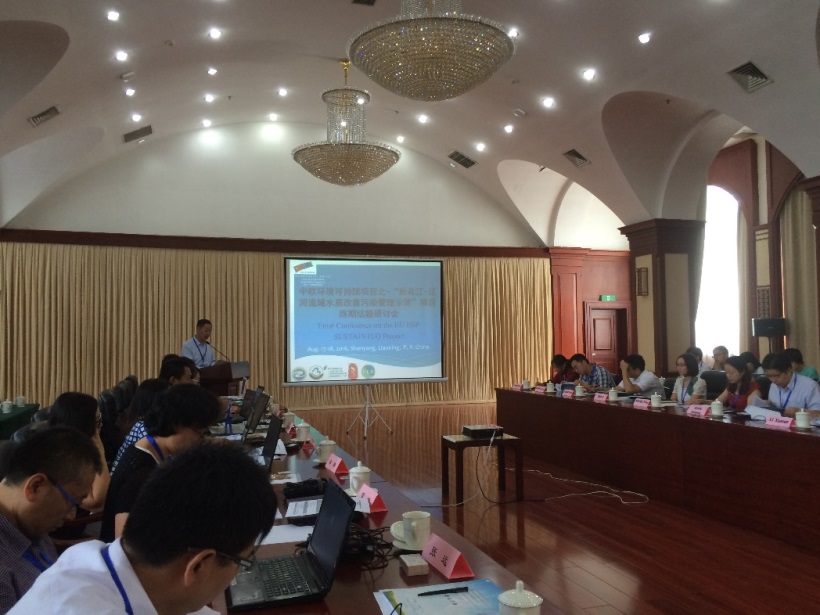
Prof. Song opened the conference by giving a talk about the current situation of water resources in China. Foto: E. Nixdorf
From 16th to 18th August 2016, the Final project conference of the SUSTAIN H20 Project successfully took place in Shenyang, Liaoning, China. Over 30 Chinese scientists and Government officials from Liaoning, Heilongjiang and Jilin Province attended this conference. From the EU side Mr. Nixdorf represented the Helmholtz Centre for Environmental Research and Mr. Williams the Centre for Ecology and Hydrology in UK at the conference.
The Conference was organized by Chinese Research Academy of Environmental Sciences (CRAES). Prof. Song, the Vice President of CRAES opened the conference by giving a talk about the current situation of water resources in China. He further hosted the discussions about difficulties, experience and solutions in this project. Mr. Williams presented his research in the area of water in EU. Additionally, the fives workgroups separately summarized the project outcomes within the last three years. Finally, the future cooperation between EU and China in the fields of Water was discussed which resulted in identifying future working points in the fields groundwater and lake water hydrology.
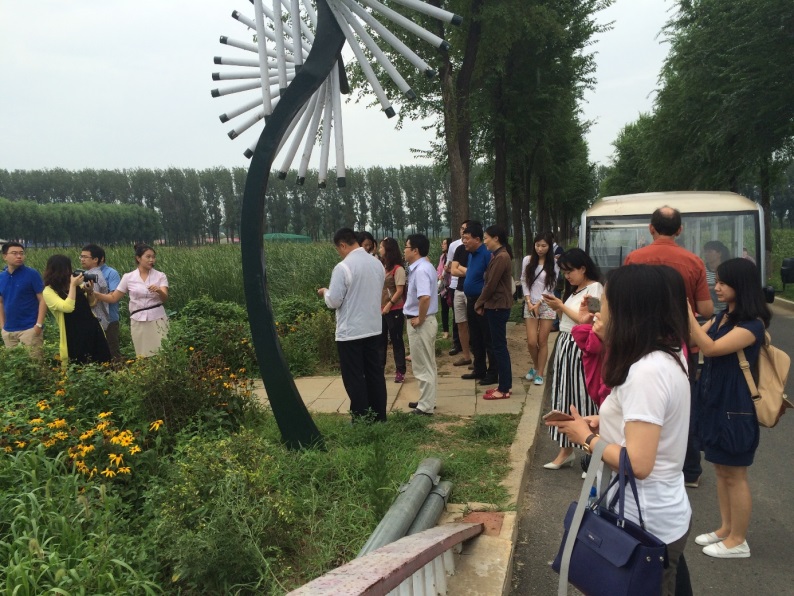 Visit of Core Area of Lotus Lake National Wetland Park. Foto: E.Nixdorf
Visit of Core Area of Lotus Lake National Wetland Park. Foto: E.Nixdorf
On 18th August, the people visited Core Area of Lotus Lake National Wetland Park in Tieling, which is near from Shenyang in order to learn more about the application of innovative wastewater treatment technologies in China. The Lotus Lake was an embanked reservoir for irrigation and flood storage since 1960s. But the reservoir had suffered from problems including successional trajectory towards dry land, lack of water supply, lack of habitat complexity, and severe pollution by toxic sewage. In order to promote the harmonious co-existence of human and nature, the local government and landscape planners worked together to establish a 4700 ha National Wetland Park (https://www.asla.org/2012awards/200.html)
Urban Catchments: Sino-German SME Partnership --13.06.2016
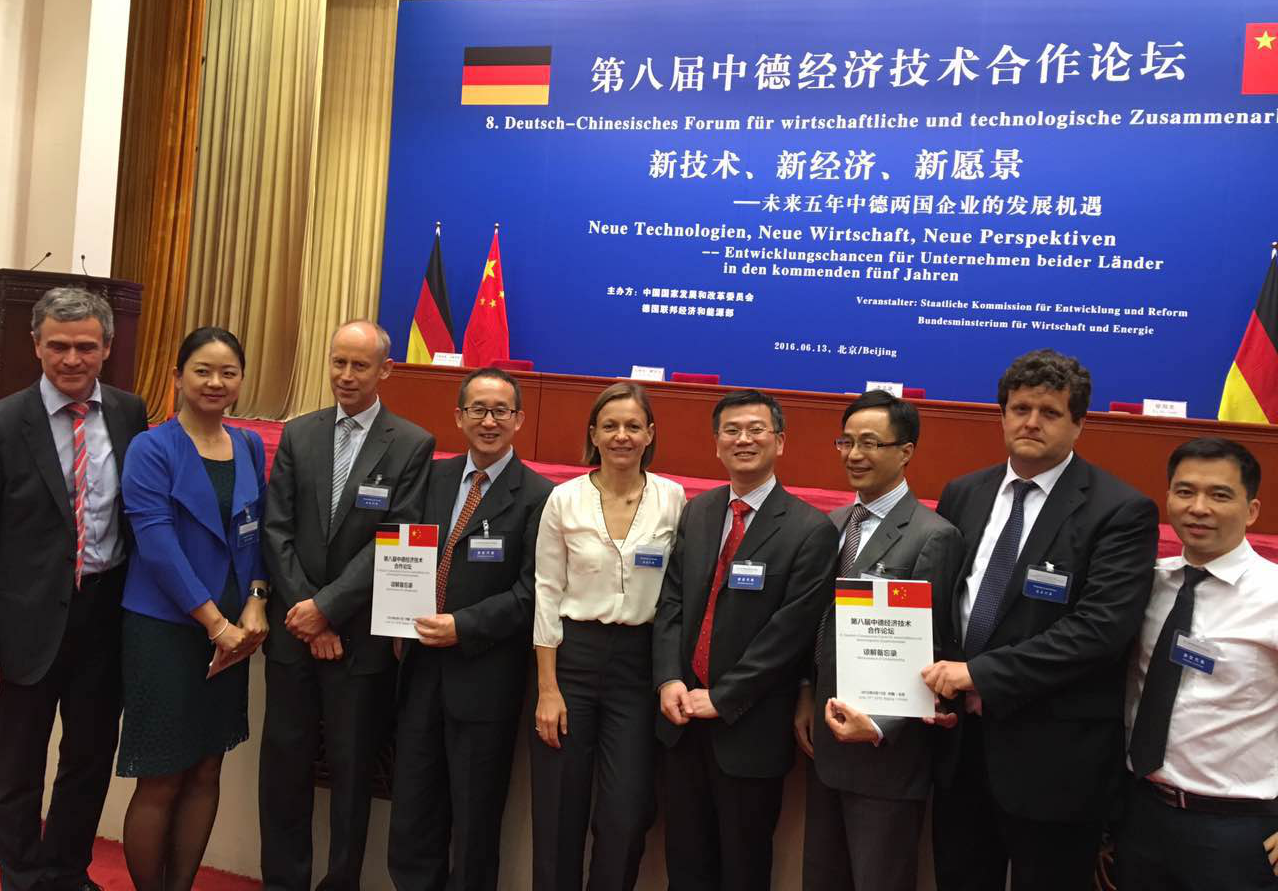 Figure caption: Frank Neubert (CEO AMC), Cui CHEN (UFZ), Olaf Kolditz (UFZ/TUDD), Jonathan FAN (CEO HC System), Nicole Umlauf (BMBF Project Office Clean Water), LIAO (Tongji University), Weijun ZHANG (GM EWaters), Jan Richter (CEO GEOS/WISUTEC), and NN (HC System) during the 8. German Chinese Forum on Economic and Technology Cooperation (from left to right)
Figure caption: Frank Neubert (CEO AMC), Cui CHEN (UFZ), Olaf Kolditz (UFZ/TUDD), Jonathan FAN (CEO HC System), Nicole Umlauf (BMBF Project Office Clean Water), LIAO (Tongji University), Weijun ZHANG (GM EWaters), Jan Richter (CEO GEOS/WISUTEC), and NN (HC System) during the 8. German Chinese Forum on Economic and Technology Cooperation (from left to right)
The BMBF-CLIENT project “Managing Water Resources for Urban Catchments” succeeded in building a first SME partnership.
In the context of the 4. Governmental Consultations between Germany and PR China on 13.06.2016 in Beijing, AMC and WISUTEC as well as HC System and EWaters signed a Memorandum-of-Understanding for future cooperation between the German and Chinese SMEs. Their major interest is in building a joint venture for future cooperation in develop- ing environmental information technology (including both soft- and hardware solutions) for sensor-based monitoring of environmental systems (e.g. for water supply and waste water). The company representatives as well as from Prof. Kolditz (UFZ/TUDD) and Prof. LIAO (Tongji Un) attended the 8. German Chinese Forum on Economic and Technology Cooperation hold at the same day and reported about ongoing projects in the Major-Water-Program as well as Sino-German cooperation concepts in future. The cooperation between research institution and companies – the so called “2+2 Concept” – shall foster research and development as well as implementation of novel environmental technologies.
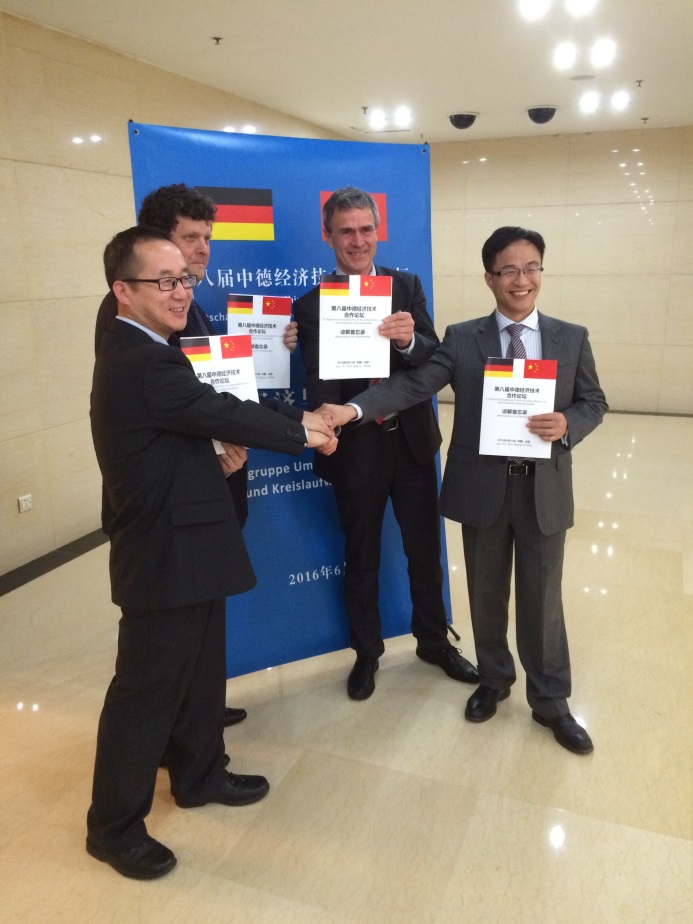
Figure caption: Jonathan FAN (CEO HC System), Jan Richter (CEO GEOS/ WISUTEC), Dr. Frank Neubert (CEO AMC) and Weijun ZHANG (GM EWaters) (from left to right) after the Signing Ceremony
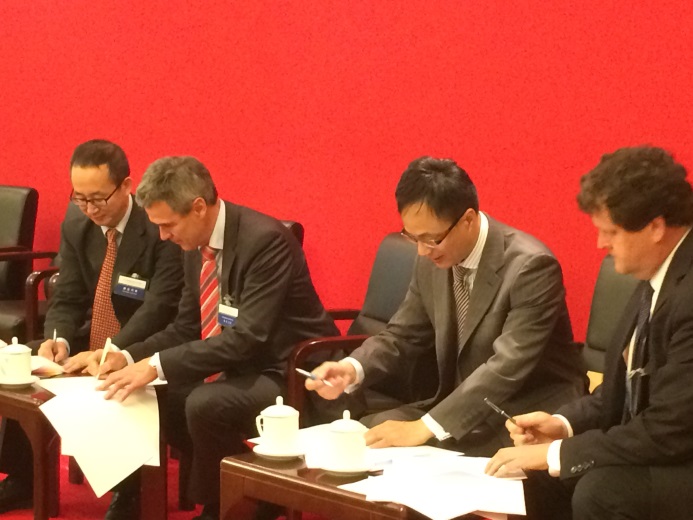
Webreports der China-Reise (12-20.03.2016)
• „Urban Catchments“ besucht das Chaohu Construction Bureau bezüglich der Ausgestaltung des geplanten “Umweltdatenzentrums - Chaohu”
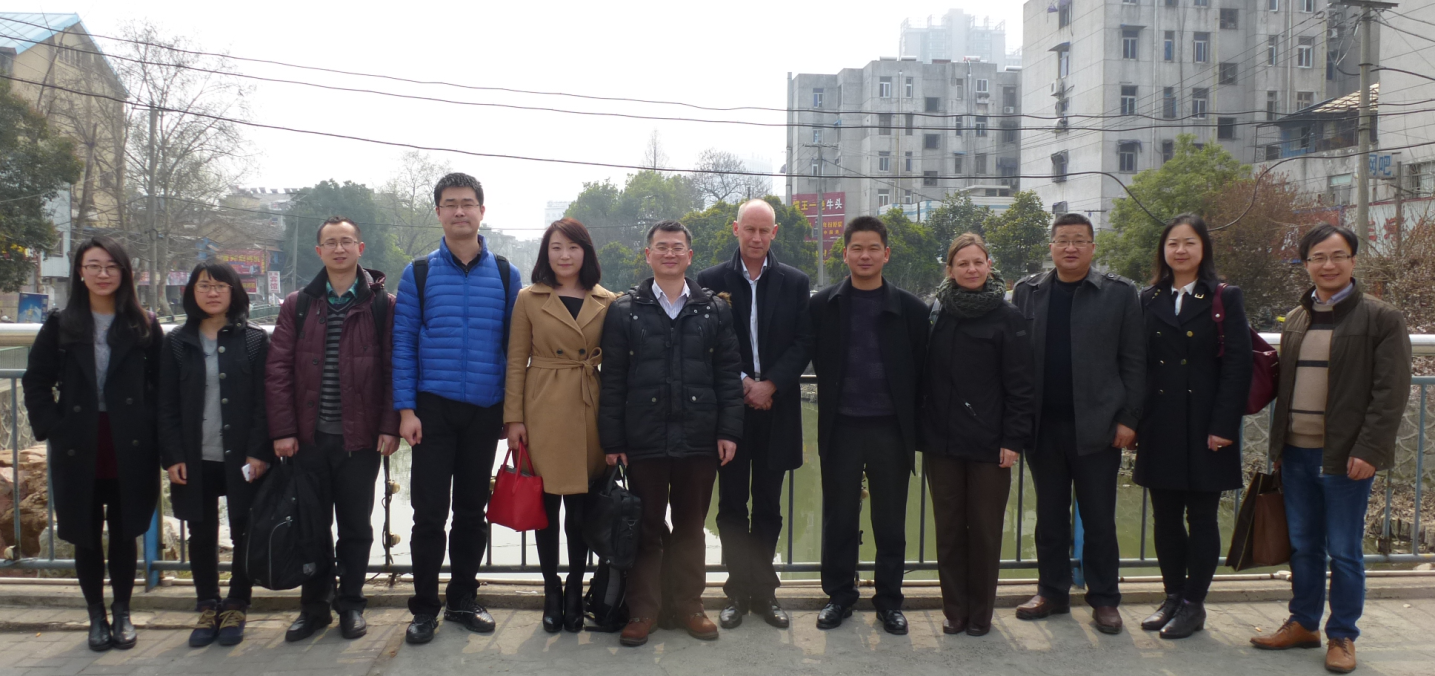 Besuch in Chaohu: Teilnehmer des Treffens, Urban Catchments Team, ProSaWa, Chaohu Construction Bureau, Tongji Universität und der Firmenvertreter HC Systems sowie Ewaters Environmental Science & Technology
Besuch in Chaohu: Teilnehmer des Treffens, Urban Catchments Team, ProSaWa, Chaohu Construction Bureau, Tongji Universität und der Firmenvertreter HC Systems sowie Ewaters Environmental Science & Technology
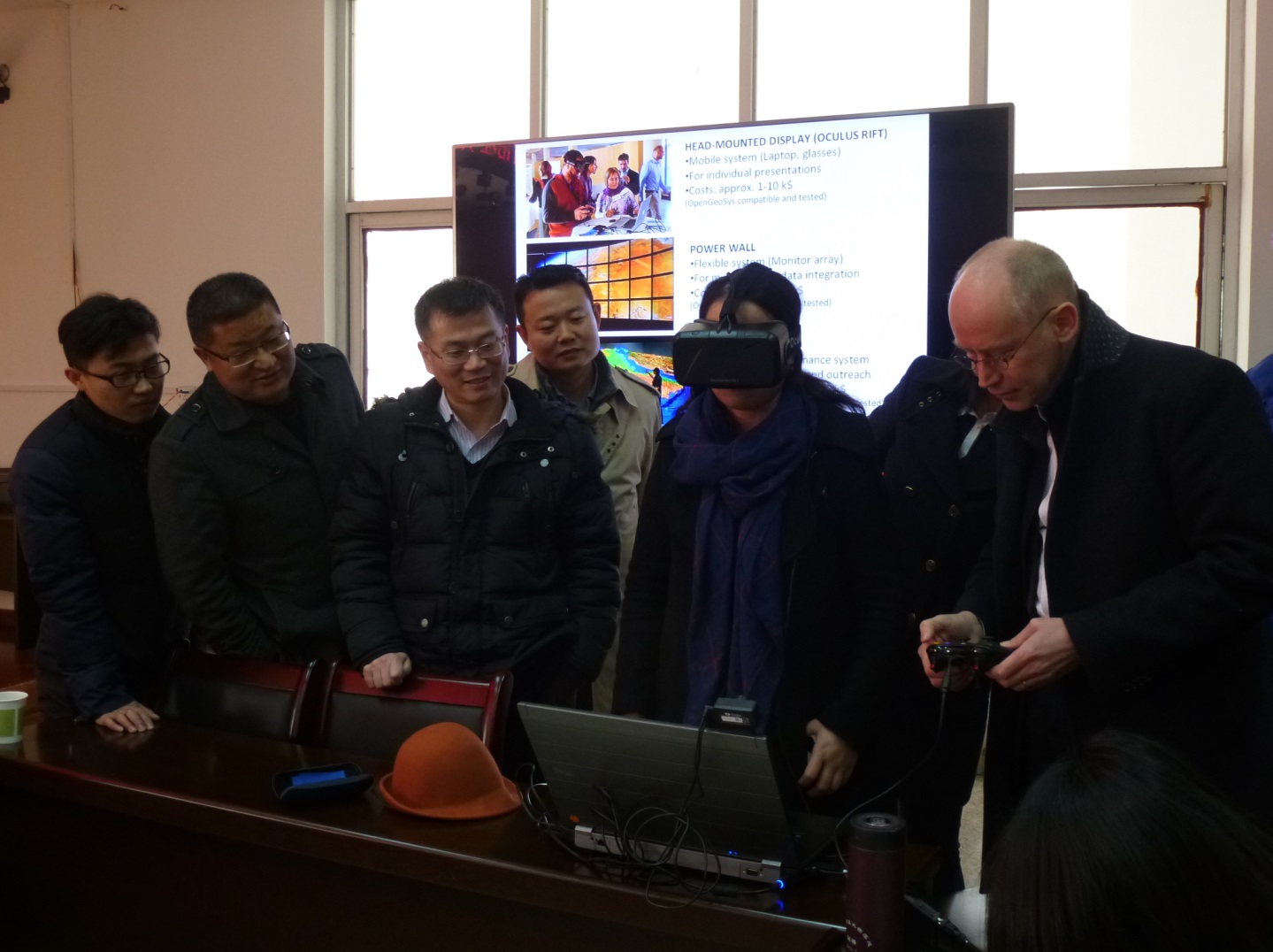 Prof. Kolditz demonstriert das Umweltinformationssystem Chaohu (Teil des BMBF-CLIENT Vorhabens „Urban Catchments“) mit einem mobilen 3D-Visualisierungsgerät (Foto N. Umlauf)
Prof. Kolditz demonstriert das Umweltinformationssystem Chaohu (Teil des BMBF-CLIENT Vorhabens „Urban Catchments“) mit einem mobilen 3D-Visualisierungsgerät (Foto N. Umlauf)
Am 14.03.2016 trafen sich Vertreter der Stadt Chaohu, der Tonji Universität, der chinesischen Firmen UC Systems und Ewaters Environmental Science & Technology (Shanghai) Ltd. sowie von Urban Catchments zu einem Gespräch in Chaohu bezüglich der geplanten Einrichtung des „Umweltdaten-zentrums Chaohu“. Nach der Begrüßung durch Herrn ZHANG dem Leiter des Chaohu Construction Bureaus, stellten Prof. LIAO mit seinen Mitarbeiterinnen die bisherigen Ergebnisse des Chaohu-Vorhabens der Tongji Universität im Rahmen des Major-Water-Programms vor. Im Anschluss berichtete Prof. Kolditz über das BMBF-CLIENT Vorhaben „Managing Water Resources for Urban Catchments - Chaohu“ und demonstrierte den aktuellen Stand der Datenintegration mit Hilfe einer mobilen Visualisier- ungseinrichtung. Der Besuch diente insbesondere dazu, die lokalen Nutzer und Stakeholder des geplanten ADB-Projekts zur Einrichtung eines Umweltinformationszentrums über die im Rahmen von „Urban Catchments“ entwickelten Konzepte und Möglichkeiten für Umwelt- informations-systeme, die daran beteiligten deutschen Firmen (AMC, bbe Moldaenke, itwh, WISUTEC), verwendete Technologien, Equipment und Software zu informieren. Die Diskussion wurde durch Herrn WANG (Chaohu Construction Bureau) geleitet, der für die Umsetzung des ADB Projekts zuständig ist. Die Vertreter der chinesischen Firmen Hr. LUO Xian Wei und Hr. JIANG Kai (HC Systems) sowie Hr. ZHANG Weijun (Ewaters) zeigten sich beeindruckt vom Stand des Vorhabens und haben großes Interesse an der Zusammen- arbeit mit den deutschen Firmen von „Urban Catchments“ im Rahmen des ADB-Projekts „Umweltdatenzentrum Chaohu“ und darüber hinaus bekundet.
• Wuhan: Treffen der Projektleitung von „Urban Catchments“ 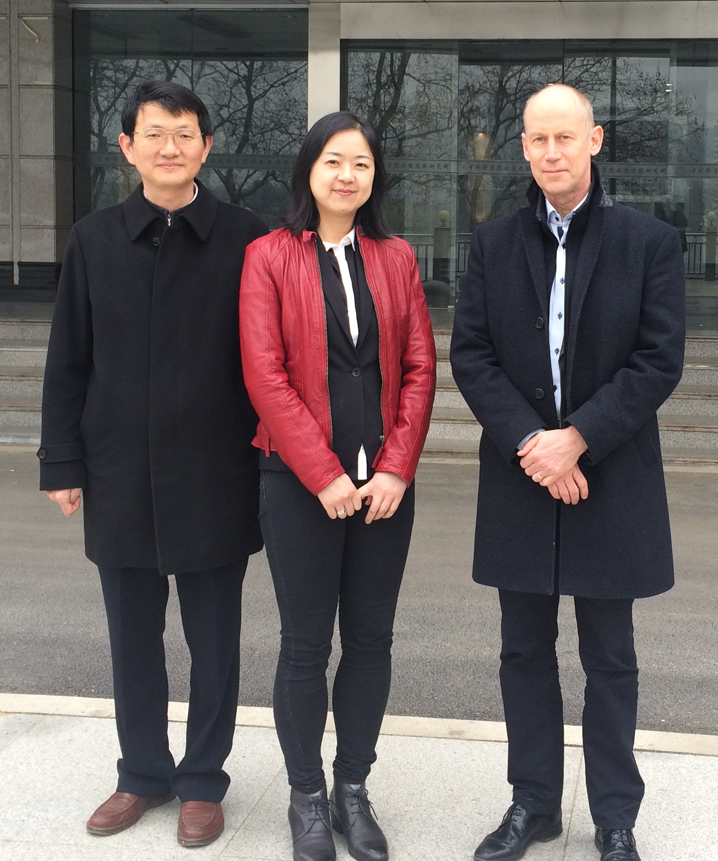
Am 15.03.2016 fand ein Treffen der Projektleitung von „Urban Catchments“ mit Kollegen des Instituts für Hydrobiologie der Chinesischen Akademie für Wissenschaften. Im Rahmen eines Workshops hat Prof. Kolditz das BMBF CLIENT Projekt vorgestellt und die Ergebnisse des „Umweltinformations-systems Choahu“ mit Hilfe einer mobilen Visualisier-ungseinheit den Professoren und Studenten demonstriert. Frau Dr. Chen hat über das CAS-Helmholtz-Netzwerk RCEIS (www.ufz.de/ rceis) berichtet.
CAS-HYB kann auf eine fast 100-jährige Geschichte zurückblicken– auch wenn der neue Name des Instituts erst vor 20 Jahren eingeführt wurde, berichtet Prof. Wang (Leiter des Instituts). Mit mehr als 300 Mitarbeitern ist CAS-HYB eine der größten Forschungseinrichtungen in der Hydrobiologie weltweit und hat bereits Kontakte zum Leibniz-Institut für Gewässerökologie und Binnenfischerei (IGB). Zum Institut gehört auch eine Einrichtung für die Zucht von Yangtze-Flussdelfinen (finnenloser Schweinswal), die vom Aussterben bedroht sind und nur noch im Poyang-See ein Rückzugshabitat haben.
CAS-HYB ist Projekt-Partner von „Urban Catchments“ und kooperiert insbesondere mit der TU Dresden (Institut für Hydrobiologie: Prof. Berendonk). Gemeinsames Interesse gilt insbesondere dem Biomonitoring. Ende Mai 2016 starten die Kollegen der TU Dresden (Drs. Jungmann und Rybicki) gemeinsam mit der Fa. bbe Moldaenke eine „Biomonitoring- Tour“ in verschiedenen Einrichtungen in Wu- han, Nanjing und Shanghai (CAS-HYB, Tongji Universität und NIGLAS), um die neue Methodik/Technologie und Strategien für Frühwarnsysteme zur kontinuierlichen Über- wachung der Wasserqualität, beispielsweise im Bereich des Trinkwasser-monitorings, in China zu propagieren.
Visit of scientific institutes in China --22.05.2016
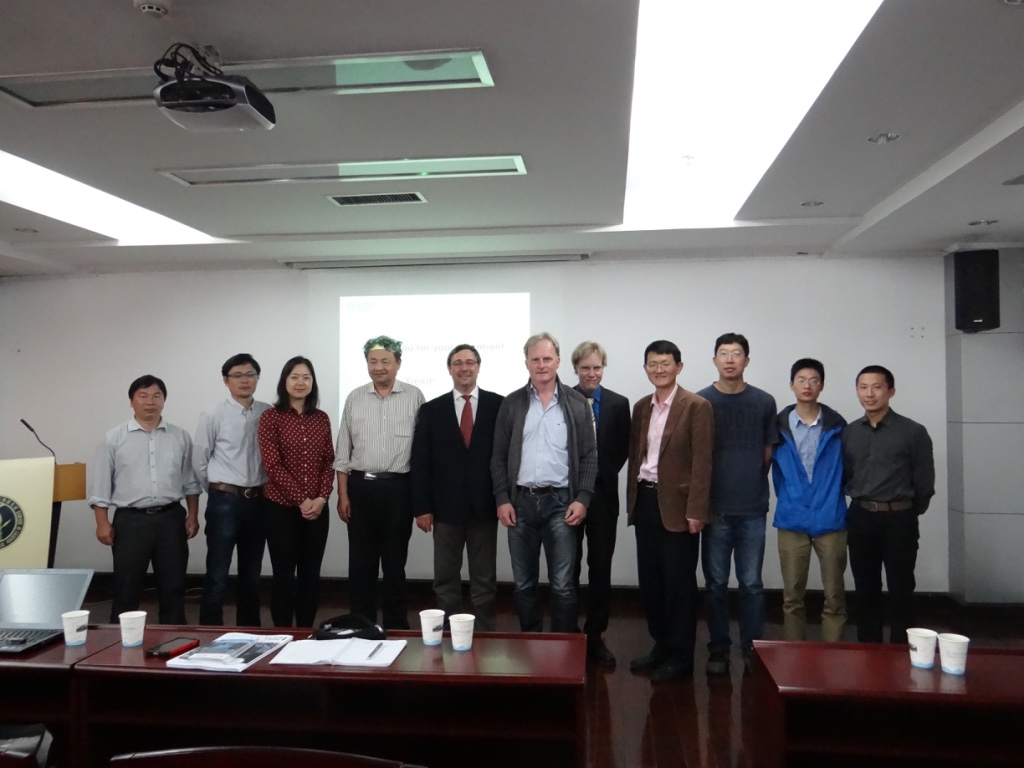
Visit of CAS 22.05.2016. Foto: RCEIS
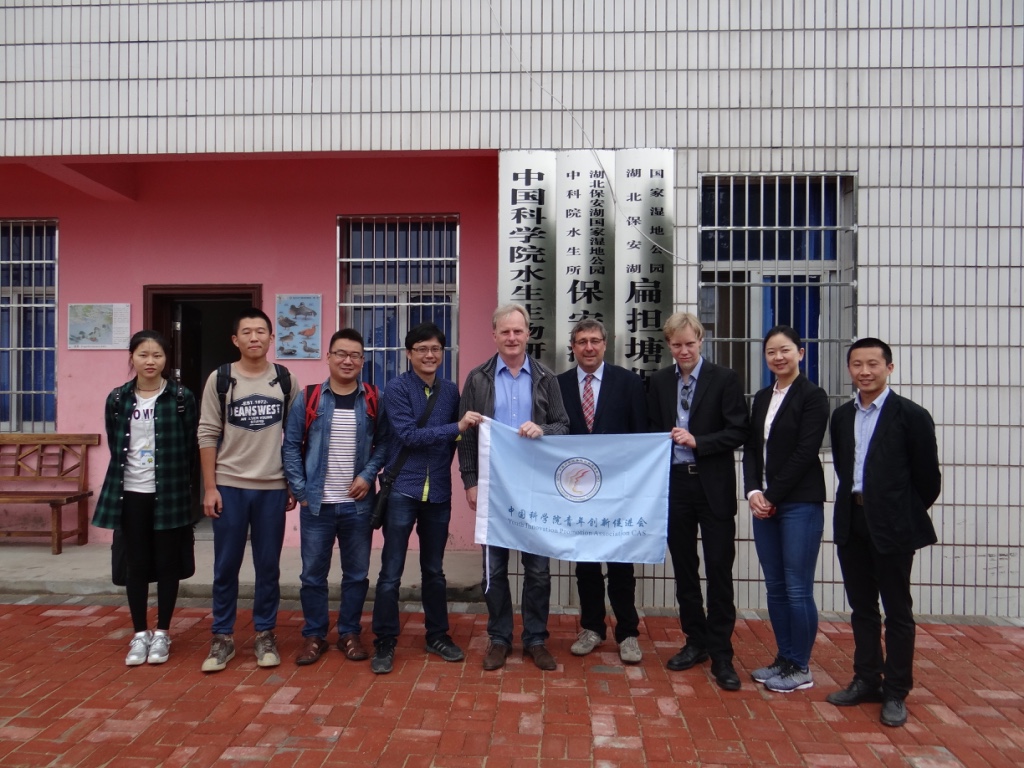
Visit of CAS. Foto: RCEIS
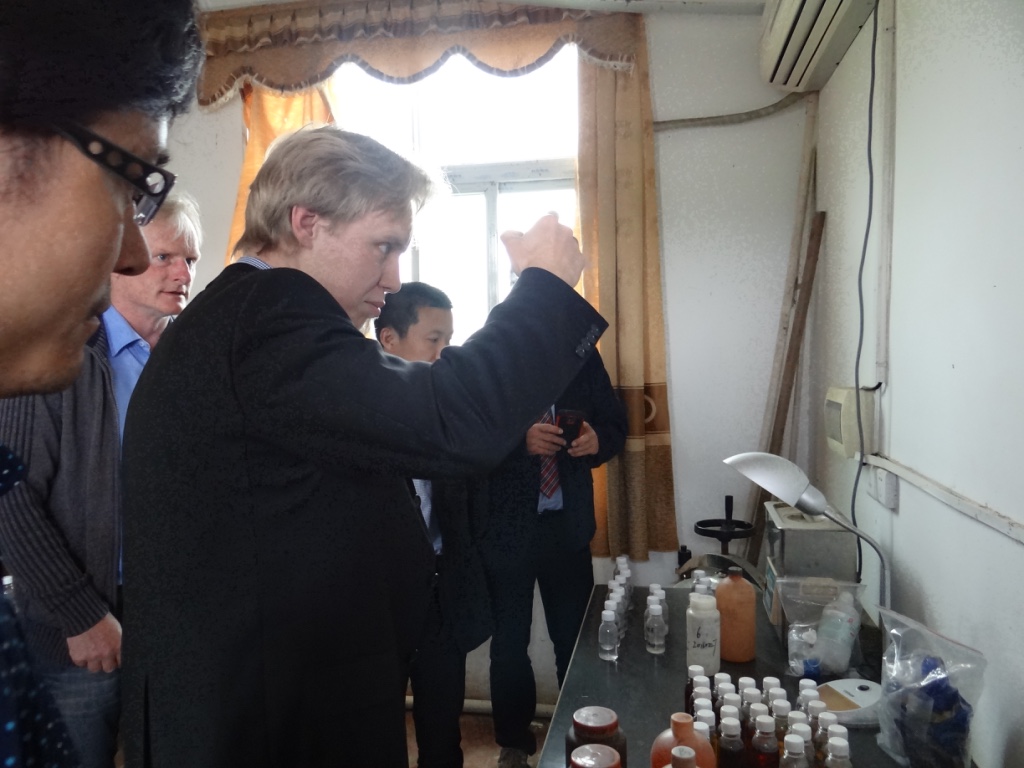
Visit of CAS. Foto: RCEIS
Mid of May a delegation of the Urban Catchment Project consisting of Dr. Dirk Jungmann and Dr. Marcus Rybicki (TU Dresden), Dr. Cui Chen and Thomas Aubron (UFZ Leipzig) and Christian Moldaenke from bbe Moldaenke realised a visit of scientific institutes in China. The aim was to deepen the cooperation with the Chinese institutes and stimulate research opportunities within the Sino-German-Cooperation. The first stop was to the Institute of Hydrobiology of the Chinese Academy of Sciences in Wuhan. The delegation visited a field station on Biandantang Lake near Wuhan and performed a workshop focusing on the application of online biomonitoring and other online-monitoring techniques for the research of the institute. It is planned to establish a water quality monitoring program for a river running through conservation area. The second stop was at the Nanjing Institute of Geology and Limnology of the Chinese Academy of Sciences. In addition to the existing cooperation in the area of lake modelling, the workshop revealed possible cooperation in the field of 1) sediment toxicity and 2) the planning of decentralized wastewater management. The third stop was to visit the Tongji-University to exchange on decentralized wastewater management projects in the Chaohu Lake region. This meeting saw the intervention of a new potential cooperation partner having ongoing projects in the Lake Chaohu region: Jiaotong University (Shanghai). Jiaotong University was thus visited to learn about their ongoing projects and exchange data. Finally, a visit of the Shenshan botanical garden (Shanghai) was organized to learn about their research on river-water treatment (non-point source pollution) and soil remediation in order to establish future collaboration. The next steps will be the organization of workshops with the respective institutes in Germany and the initiation of a student exchange to consolidate the scientific relationship.
Visit of Tongjing-Uni. Foto: RCEIS
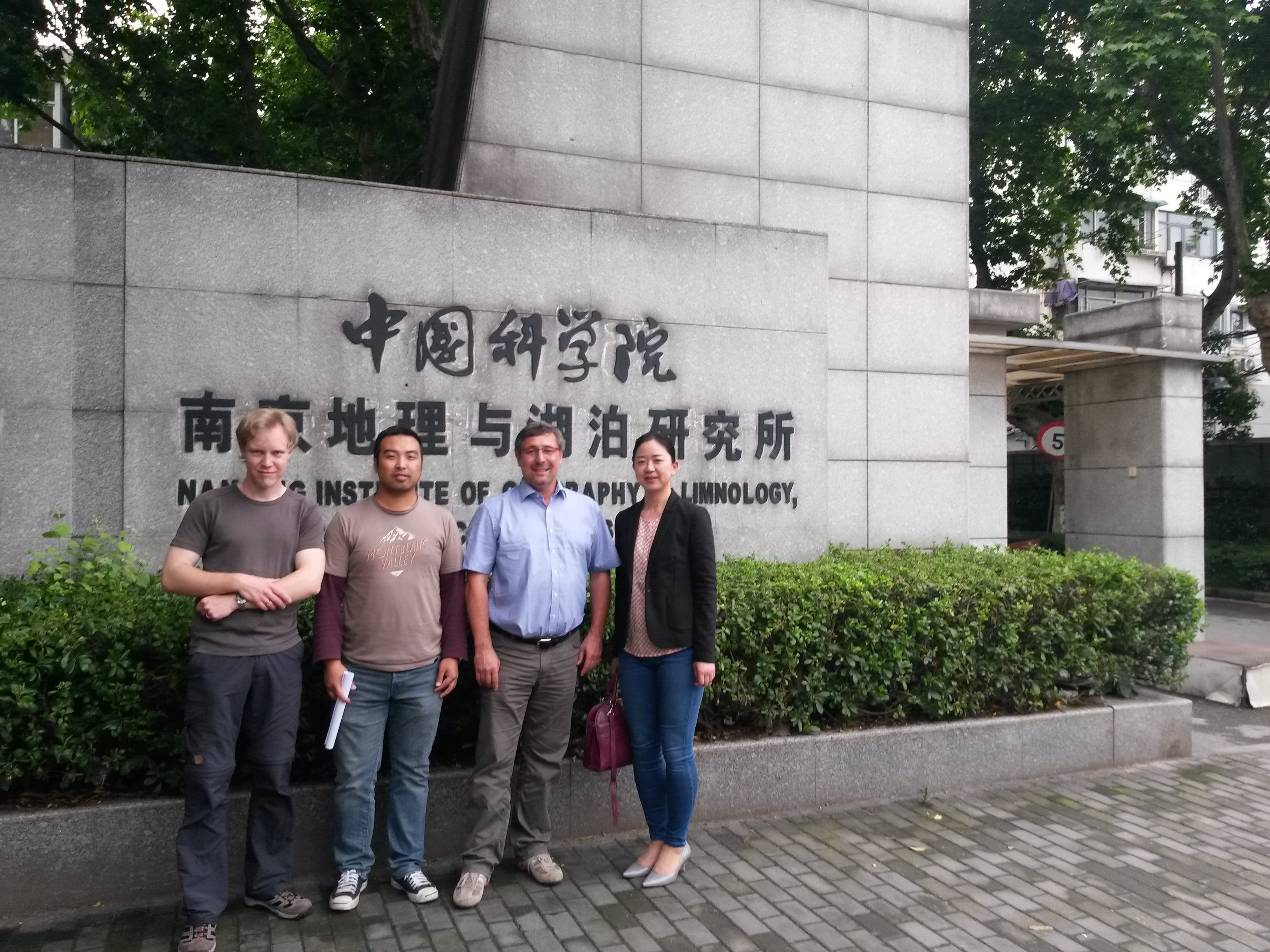
Visit of NIGLAS. Foto: RCEIS
